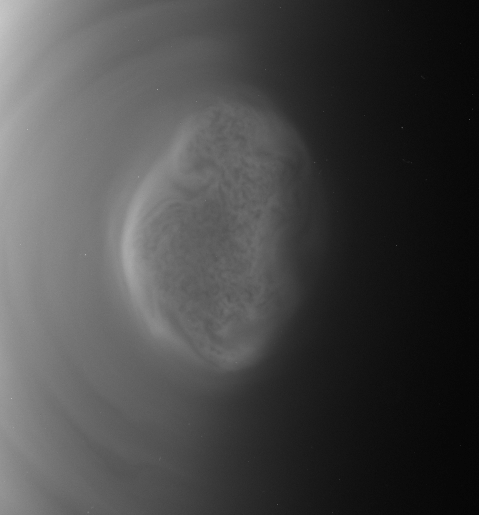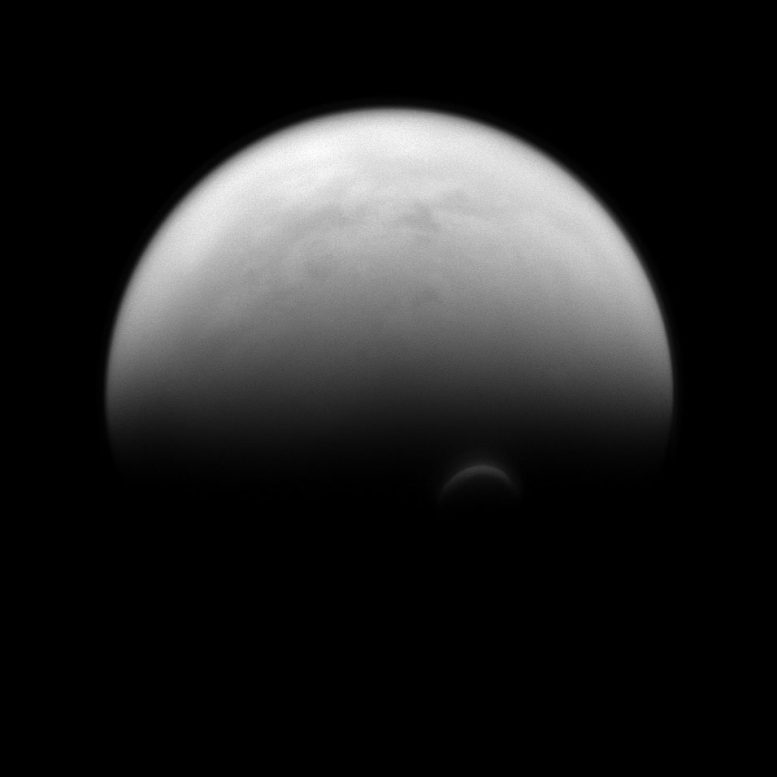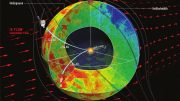NASA’s Cassini spacecraft views Titan, Saturn’s largest moon.
The sunlit edge of Titan’s south polar vortex stands out distinctly against the darkness of the moon’s unilluminated hazy atmosphere. The Cassini spacecraft images of the vortex led scientists to conclude that its clouds form at a much higher altitude – where sunlight can still reach – than the surrounding haze.
Titan (3,200 miles, or 5,150 kilometers across) is Saturn’s largest moon. For a color image of the south polar vortex on Titan, see PIA14919.

This movie captured by NASA’S Cassini spacecraft shows a south polar vortex, or shows a south polar vortex, or a swirling mass of gas around the pole in the atmosphere, at Saturn’s moon Titan. The swirling mass appears to execute one full rotation in about nine hours — much faster than the moon’s 16-day rotation period. The images were taken before and after a distant flyby of Titan on June 27, 2012.
This view looks toward the trailing hemisphere of Titan. North on Titan is up and rotated 32 degrees to the left. The image was taken with the Cassini spacecraft narrow-angle camera on July 14, 2013 using a spectral filter sensitive to wavelengths of near-infrared light centered at 938 nanometers.
The view was obtained at a distance of approximately 808,000 miles (1.3 million kilometers) from Titan and at a Sun-Titan-spacecraft, or phase, angle of 82 degrees. Image scale is 5 miles (8 kilometers) per pixel.
The Cassini-Huygens mission is a cooperative project of NASA, the European Space Agency and the Italian Space Agency. The Jet Propulsion Laboratory, a division of the California Institute of Technology in Pasadena, manages the mission for NASA’s Science Mission Directorate, Washington, D.C. The Cassini orbiter and its two onboard cameras were designed, developed and assembled at JPL. The imaging operations center is based at the Space Science Institute in Boulder, Colorado.
For more information about the Cassini-Huygens mission visit https://www.nasa.gov/mission/cassini. The Cassini imaging team homepage is at http://ciclops.org.










Be the first to comment on "Cassini Views Titan’s South Polar Vortex"